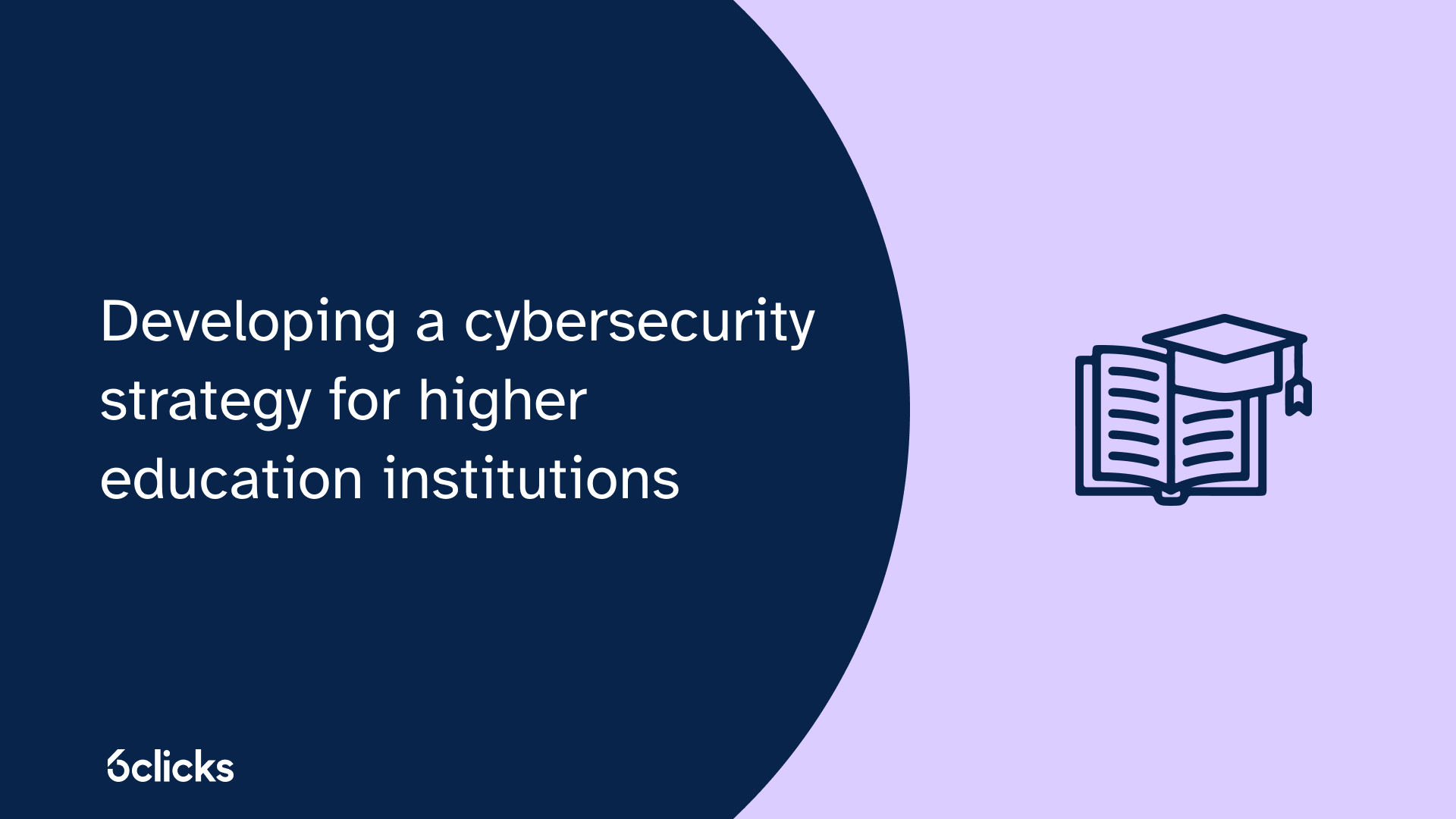What are the ASD Essential 8?
What is the ASD essential 8?
The Australian Signals Directorate (ASD) Essential 8 is a set of cybersecurity strategies developed by the Australian government to assist organizations in protecting their systems and networks against cyber threats. These measures have been designed to prioritize the most effective security controls that organizations can implement to significantly enhance their cybersecurity posture. The Essential 8 is based on a comprehensive understanding of the cyber threats faced by Australian businesses and the cybersecurity practices that can mitigate these risks. By implementing the Essential 8, organizations can strengthen their security strategy, improve their resilience against cyber attacks, and minimize the impact of potential breaches. The Essential 8 covers a range of areas, including the patching of operating systems and applications, application whitelisting, restricting administrative privileges, and performing regular backups, among other essential mitigation strategies. It provides organizations with a clear framework for enhancing their cybersecurity controls and maturity levels to protect against the constantly evolving cyber threat landscape.
Why is the ASD essential 8 important for Australian businesses?
The ASD Essential 8 is a crucial framework for Australian businesses in ensuring their cybersecurity. This framework provides a comprehensive set of mitigation strategies that offer a strong foundation for protecting against common cyber threats. Adhering to the Essential 8 can significantly enhance an organization's security posture and minimize the impact of potential security incidents.
One of the key reasons why the Essential 8 is important for Australian businesses is its ability to provide effective security measures. By implementing the Essential 8, organizations can strengthen their defenses and protect critical systems from cyber attacks. This framework includes strategies such as patching operating systems and applications, using multifactor authentication, and implementing application whitelisting, which help mitigate cybersecurity risks and minimize the risk of an attack.
Moreover, the Essential 8 offers a structured approach to cybersecurity by providing a framework to measure an organization's security maturity level. By assessing the maturity level against this framework, businesses can identify gaps and areas for improvement in their cybersecurity practices. This allows organizations to prioritize their efforts and allocate resources effectively.
Overall, the ASD Essential 8 is important for Australian businesses as it offers a comprehensive and practical guide for enhancing cybersecurity. Adhering to this framework helps organizations protect against common cyber attacks, minimize the impact of security incidents, and establish effective security measures. By implementing the Essential 8, businesses can significantly improve their overall cybersecurity posture and contribute to the protection of sensitive data and assets.
Cybersecurity threats
Cybersecurity threats are a constant concern for businesses, both large and small. In today's digital landscape, organizations must remain vigilant in protecting their sensitive data and critical systems from potential attackers. With an increasing number of cyber threats and the potential for significant financial and reputational damage, it is essential for businesses to have a robust cybersecurity strategy in place. This strategy must encompass a variety of measures, including proactive threat detection, effective incident response plans, and continual security monitoring. By staying informed about the latest cybersecurity threats and implementing the necessary security controls, organizations can strengthen their defenses, minimize the risk of a breach, and maintain the trust of their customers and stakeholders.
Common cyber threats to Australian businesses
Australian businesses face a range of cyber threats that can have a significant impact on their operations, data, and reputation. These threats have become increasingly sophisticated and can lead to devastating consequences if not adequately addressed. The Australian Signals Directorate (ASD) recognizes the need for businesses to implement effective security measures and has developed the ASD Essential 8 guidelines to help mitigate these threats.
Cyber threats can manifest in various forms, including malware, phishing attacks, ransomware, and data breaches. These threats can exploit vulnerabilities in business systems, compromising sensitive information, and disrupting operations. For example, a successful phishing attack can result in unauthorized access to user accounts and the potential theft of data. Similarly, a ransomware attack can encrypt critical systems and demand a ransom for their release, causing significant disruption and financial loss.
The ASD Essential 8 guidelines provide a framework to address these threats and improve cyber resilience. They include strategies such as application whitelisting, patching operating systems and applications, restricting administrative privileges, and regular backups. By implementing these measures, Australian businesses can strengthen their security posture, reduce the risk of cyber security incidents, and protect their valuable data.
As cyber threats continue to evolve, it is crucial for Australian businesses to stay informed and proactive in their approach to cybersecurity. By following the ASD Essential 8 guidelines, businesses can enhance their cyber resilience and ensure they are better equipped to handle potential attacks, safeguard business systems, and protect their data from unauthorized access or loss.
Keywords: cyber threats, Australian businesses, ASD Essential 8, business systems, data
The impact of cyber threats on business systems and data
Cyber threats pose a significant risk to business systems and data, with potential consequences that can have a lasting impact on organizations. These threats can range from sophisticated malware attacks to data breaches and can result in severe financial loss, reputational damage, and legal and regulatory consequences.
One potential consequence of cyber threats is the compromise of sensitive information. Hackers can gain unauthorized access to business systems and steal valuable data, including customer information, financial records, and intellectual property. This can lead to severe financial loss for businesses, as they may face significant legal and regulatory penalties, expensive recovery efforts, and potential lawsuits from affected individuals or organizations.
Cyber threats can also disrupt business operations, causing significant downtime and affecting productivity. For example, a successful ransomware attack can encrypt critical systems and demand a ransom for their release. This not only leads to financial loss but also disrupts day-to-day operations, resulting in a loss of revenue and potentially damaging customer relationships.
Furthermore, the impact of cyber threats extends beyond financial consequences. Businesses also face reputational damage when their systems and data are compromised. This can erode customer trust and loyalty, leading to a loss of business and long-term damage to the organization's brand.
To mitigate the impact of these cyber threats, it is crucial for businesses to implement effective security measures and mitigation strategies. This includes regularly updating and patching operating systems and applications, implementing multi-factor authentication, and training employees to recognize and respond to potential threats. By taking proactive measures, businesses can minimize the risk of cyber threats and protect their business systems and valuable data from unauthorized access or loss.
Maturity level assessment
Maturity level assessment is a critical component in evaluating and improving an organization's cybersecurity posture. It involves measuring the effectiveness and maturity of the organization's security controls, practices, and processes. By assessing the maturity level of their cybersecurity practices, businesses can identify and prioritize areas for improvement and allocate resources accordingly. This assessment provides a comprehensive understanding of the organization's current security capabilities and helps in determining the level of risk and the appropriate mitigation strategies needed to enhance their security posture. A maturity level assessment typically involves evaluating various aspects such as the implementation of security controls, patching of operating systems and applications, user application hardening, regular backups, and user duties. By regularly conducting maturity level assessments, businesses can adapt their cybersecurity practices to address emerging threats and ensure effective security measures are in place to protect against cyber risks.
Understanding the maturity model for security posture evaluation
Understanding the maturity model for security posture evaluation is crucial for businesses in assessing and improving their cybersecurity practices. A maturity model provides a systematic framework to evaluate an organization's current cybersecurity defenses and identify areas for improvement.
The process of evaluating security posture typically involves several steps. Firstly, it is essential to gain a clear insight into the existing defensive posture of the organization. This involves assessing the security controls and measures in place, identifying potential vulnerabilities, and understanding the level of protection against various cyber threats.
Once the defensive posture is understood, the next step is to implement widely accepted mitigation strategies. These strategies include measures such as patching operating systems and applications, implementing multi-factor authentication, controlling user privileges, and hardening critical systems. These steps help to reduce the risk of cyberattacks and enhance the overall security posture.
Finally, strengthening security with multiple layers of defense is crucial. This involves implementing effective security controls, such as application control, user application hardening, and configuration settings. Additionally, regular backups and daily backups are essential for ensuring the resilience of business systems in the face of cyber threats.
By following the maturity model for security posture evaluation, organizations can comprehensively assess their cybersecurity practices, identify gaps in their defenses, and take appropriate action to enhance their security posture. This approach enables businesses to stay ahead of evolving cyber threats and protect their critical assets effectively.
Benefits of conducting a maturity Level assessment
Conducting a maturity level assessment for security posture evaluation offers several benefits for organizations. Firstly, it provides a comprehensive understanding of the current state of the organization's security measures and controls. This assessment helps identify strengths and weaknesses in the existing security posture, enabling organizations to prioritize areas that require improvement.
Understanding the maturity model is invaluable in determining the target maturity level for an organization. This model provides a framework for measuring and comparing security practices against industry standards and best practices. By evaluating the organization's maturity level, organizations can set realistic goals and develop a roadmap to enhance their security posture. This ensures that resources are allocated effectively and progress is made in a structured manner.
Assessing security posture using the maturity model has numerous advantages. Firstly, it enables organizations to benchmark themselves against industry peers. This allows for a better understanding of how the organization's security measures and controls compare to others in the same sector. Additionally, it provides organizations with a clear picture of their progress over time, allowing for the measurement of improvement and the identification of areas that still require attention.
Furthermore, conducting a maturity level assessment helps organizations prioritize investments in cybersecurity. By identifying areas with lower maturity levels, organizations can allocate resources and implement measures that address the most critical vulnerabilities and risks. This targeted approach ensures that efforts and investments are focused on areas with the highest impact on security posture.
In conclusion, conducting a maturity level assessment offers significant benefits for organizations. It helps organizations gain insight into their current security posture, determine the target maturity level, benchmark against industry peers, and prioritize investments. This structured approach ensures that efforts are focused on the most critical areas, ultimately leading to an enhanced security posture.
How to assess Your security posture using the maturity model
Assessing your security posture using the ASD Essential 8 maturity model is an effective way to evaluate and enhance the level of cyber resilience and defenses for Australian businesses. This model, developed by the Australian Signals Directorate (ASD), provides a comprehensive framework for measuring an organization's security practices against best practices and industry standards.
The first step in conducting a security posture assessment is to assess your current security controls and measures against the ASD Essential 8. These eight essential mitigation strategies cover a range of security areas, including patching operating systems and applications, application whitelisting, and limiting administrative privileges, among others. By evaluating your organization's implementation of these strategies, you can identify any areas that need improvement and prioritize investments in cybersecurity accordingly.
Once you have identified the gaps in your security posture, the next step is to implement the recommended security controls. This may involve patching operating systems and applications to address vulnerabilities, implementing multi-factor authentication to enhance user authentication, or configuring settings to prevent the execution of malicious code. It is important to align these measures with the specific needs and risks of your organization.
Regularly reassessing your security posture using the ASD Essential 8 maturity model allows you to track your progress over time and continuously improve your cyber resilience. By following this approach, Australian businesses can strengthen their security defenses and mitigate the risk of cyber threats.
Mitigation strategies
Mitigation strategies play a crucial role in enhancing the cybersecurity posture of organizations and reducing the risk of cyber threats. The Australian Signals Directorate (ASD) has outlined the ASD Essential 8, which are eight essential mitigation strategies that organizations should implement to strengthen their security controls. These strategies cover various areas, such as patching operating systems and applications, application whitelisting, and limiting administrative privileges. By implementing these strategies, organizations can effectively mitigate the impact of attacks and enhance their overall cybersecurity posture. It is important for organizations to assess their current security controls and measures against the ASD Essential 8 and identify any gaps that need to be addressed. This will help organizations prioritize investments in cybersecurity and ensure that they have effective security measures in place to protect their critical systems and data.
Patch Operating systems and applications regularly
Regularly patching operating systems and applications is essential for enhancing cybersecurity and mitigating the risk of cyber threats. Patching involves the process of identifying and installing necessary updates to address vulnerabilities in an organization's systems.
By patching operating systems and applications, businesses can ensure that their systems are protected against potential security breaches. This is crucial as cyber threats are constantly evolving, and new vulnerabilities are discovered regularly. Failure to patch systems can leave them exposed to malicious attacks, which can have detrimental consequences for businesses.
To effectively patch operating systems and applications, organizations need to follow a systematic approach. This includes conducting self-assessments to identify potential vulnerabilities within their systems, utilizing vulnerability databases to stay informed about the latest threats, and conducting third-party risk assessments to identify any vulnerabilities that may have been overlooked.
Regular patching of operating systems and applications is a vital part of a comprehensive cybersecurity strategy. It strengthens the security posture of organizations and minimizes the risk of cyber incidents. By prioritizing patching and staying up to date with the latest updates and patches, businesses can significantly enhance their cybersecurity measures and protect their assets.
Enable multi-Factor authentication for user access applications
Enabling multi-factor authentication for user access applications is of utmost importance in today's cyber threat landscape. It adds an extra layer of security by requiring users to provide two or more verification methods to access their accounts or applications.
By implementing multi-factor authentication, businesses can significantly mitigate the risk of unauthorized access and protect sensitive information. Hackers often rely on stolen or weak passwords to gain entry into systems. However, with multi-factor authentication in place, even if a hacker manages to obtain a user's password, they would still be unable to access the account without providing the additional verification methods.
One of the key benefits of multi-factor authentication is enhanced security. It prevents unauthorized access from malicious actors, reducing the likelihood of data breaches or unauthorized transactions. It also provides an additional safeguard against phishing attacks, where hackers attempt to trick users into revealing their login credentials.
Implementing multi-factor authentication also helps businesses comply with regulatory requirements and industry standards. Many compliance regulations, such as the Payment Card Industry Data Security Standard (PCI-DSS) and the Health Insurance Portability and Accountability Act (HIPAA), require the use of multi-factor authentication to protect sensitive customer data.
Set strong configuration settings and macros in business systems
Setting strong configuration settings and macros in business systems is of utmost importance in maintaining a secure cyber environment. Configuration settings are integral in determining the security posture of an organization's systems. These settings ensure that the business systems are configured with the best security practices, thereby minimizing vulnerabilities and reducing the risk of cyber threats.
When it comes to macros in business systems, specifically in Microsoft Office applications, their configuration settings play a crucial role in preventing the execution of malicious code and protecting against cyber attacks. Macros are automated tasks that users can create to automate repetitive tasks in Office applications such as Word, Excel, and PowerPoint. However, macros can also be exploited by hackers to inject malicious code into documents or spreadsheets, potentially compromising the system.
By configuring the macro settings in Microsoft Office, businesses can effectively block the execution of macros that may contain malicious code. A recommended approach is to block macros from the internet altogether and only allow vetted macros that are stored in trusted locations, or digitally signed with a trusted certificate. This ensures that only macros from known and trusted sources are executed, minimizing the risk of introducing malware or other malicious activities.
In conclusion, setting strong configuration settings and carefully configuring macro settings in business systems, particularly in Microsoft Office applications, is crucial to prevent the execution of malicious code and protect against cyber attacks. By implementing these measures, businesses can greatly enhance their cybersecurity posture and minimize the risk of security breaches.
Implement application control to block malicious code and unwanted programs
Implementing application control is an essential step in blocking malicious code and unwanted programs from infiltrating business systems. Application control is a security measure that allows businesses to have granular control over which applications are allowed to run on their network.
By implementing application control, businesses can create a whitelist of approved applications, blocking any unauthorized or potentially malicious programs from running. This prevents the execution of malicious code and helps protect against cyber attacks.
Application control should be implemented alongside other sophisticated cybersecurity solutions to ensure comprehensive protection. While antivirus software can help detect and mitigate known threats, application control provides an added layer of defense by blocking the execution of any unauthorized or suspicious programs.
The Australian Signals Directorate (ASD) recommends several controls to effectively implement application control. This includes the implementation of a whitelisting solution across all workstations and endpoints, ensuring that only approved applications are allowed to run. Additionally, a whitelisting solution should also be implemented across all servers to prevent unauthorized programs from running on critical systems.
To further enhance security, businesses should also implement Microsoft's latest block rules, which help identify and block known malicious code and unwanted programs.
In conclusion, implementing application control is crucial in blocking malicious code and unwanted programs. By utilizing a whitelisting solution and Microsoft's block rules, businesses can significantly enhance their cybersecurity posture and protect their systems from potential threats.
Ensure daily backups of critical data and regular backups of all data
Ensure daily backups of critical data and regular backups of all data are essential components of the ASD Essential 8 framework. Daily backups are crucial for critical data as they provide a means to restore any lost or corrupted information quickly. This ensures business continuity and minimizes the impact of cyber attacks or system failures. On the other hand, regular backups of all data are important to protect the organization's overall information assets.
To effectively implement and test backup and restoration procedures, businesses should adhere to the recommended controls and processes. This includes defining backup schedules, specifying the required backup media and storage capacity, and establishing backup rotation policies. Regular testing is vital to verify the integrity and effectiveness of the backup system, ensuring that data can be successfully restored when needed.
Furthermore, dispersing backups across multiple geographical locations is crucial. In the event of a physical disaster, having backups stored in different locations mitigates the risk of complete data loss. Additionally, backups should be stored for at least three months to allow for the recovery of data from previous points in time.
Related eBooks & Expert guides
- What is the ASD Essential Eight?
- Is the ASD Essential Eight mandatory?
- Do Australian businesses need to report data breaches?
- What are the objectives of ASD Essential 8?
- ASD Essential 8: Application control
Blogs & Thought Leadership
- ASD Essential 8 vs ISO 27001
- ASD Essential 8 vs PCI-DSS
- ASD Essential 8 vs NIST CSF
- ASD Essential 8 vs SOC 2
- ASD Essential 8 vs NIST SP 800-53







![A cyber GRC expert guide for portfolio managers [+ demo + price guide]](https://www.6clicks.com/hubfs/A%20cyber%20GRC%20expert%20guide%20for%20portfolio%20managers.jpg)